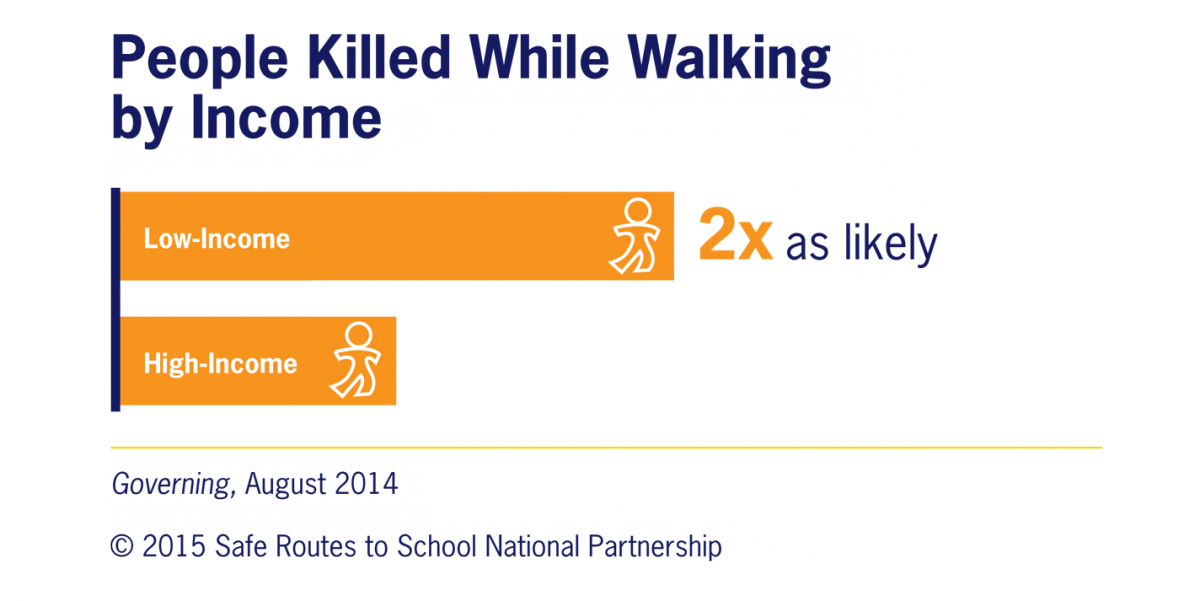
Children from low-income families are twice as likely as children from wealthier families to walk to school, but they often face significant traffic and personal safety challenges on the trip to school.
Low-income, urban residents are more likely to experience busy streets, poor pedestrian and bicycle infrastructure, and threats from crime and violence. Low-income, rural communities often lack sidewalks and may see high-speed state highways bisecting their communities. Further, low-income communities and communities of color often have poorer infrastructure and don’t have the funding, strong policies, or staffing resources available for building streets that are safe for walking and bicycling.

It is no surprise, then, that childhood obesity rates are higher among low-income children, children of color, and children in rural communities.
Bringing Together Health, Equity, and Active Transportation
We are committed to advancing active transportation and healthy community design in underserved communities and schools by advocating for the inclusion of equity and health language in federal legislation and state policies, to working with social equity organizations and health organizations across the country, and to leveraging our deep expertise to share best practices, core knowledge, and research. We aim to create communities that support health for children who are low-income, of color, native, recent immigrants, underserved, or who have disabilities.

